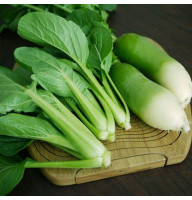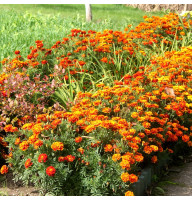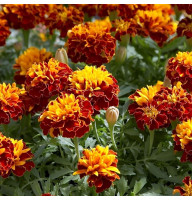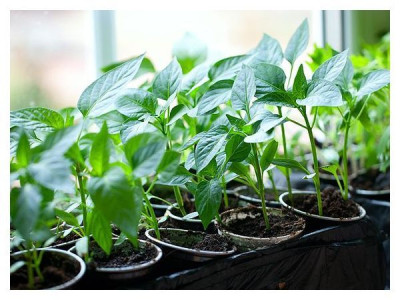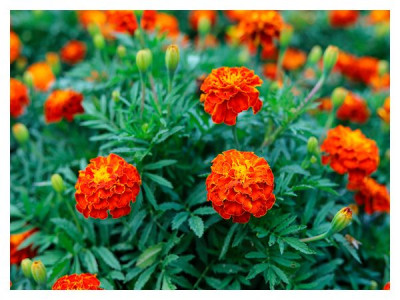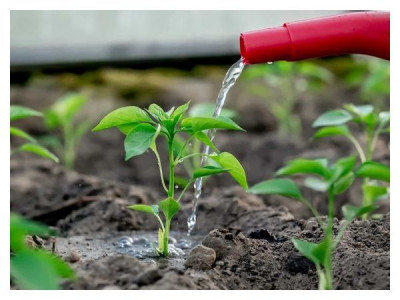Among the relatively new garden crops that are grown in our beds, you can also meet the daikon - it is also a sweet radish, Japanese radish, white radish. Growing and caring for daikon in the open field is not difficult even for an inexperienced grower, but knowledge of the characteristics of the culture is necessary.
Daikon is a vegetable crop with large white roots. It is not yet as popular as ordinary radish, but many gardeners appreciate it for its beneficial properties, productivity and ease of cultivation. We will find out why this vegetable is unique, how to plant and grow it.
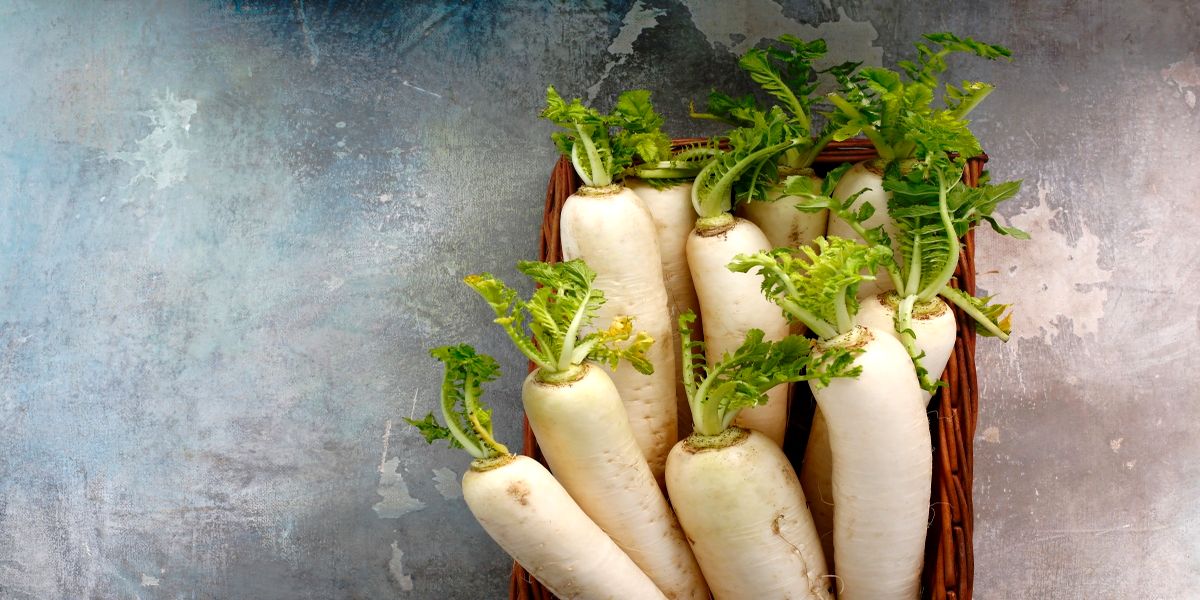
Growing a daikon is easy if you follow the deadlines and agricultural practices. Due to the high yield, the absence of big problems during care and the undoubted benefits, the daikon has gained popularity among gardeners. This radish does not need a greenhouse, only very early crops, if necessary, are grown in protected ground.
Daikon: a description of the culture

Daikon is a representative of cruciferous, that is, the closest relative of cabbage.
The daikon is extremely popular in Southeast Asia. Grow it because of the large vitamin roots. In most varieties, they are painted white and have an oblong shape.
Under the right conditions, they grow up to 60-70 cm long and 10-12 cm in diameter. The mass of the root crop is up to 3-4 kg, although normally they weigh from 0.6 to 1 kg, rounded ones are smaller.
The word "daikon" in Japanese means "big root".
Daikon flesh is white, very juicy, almost without signs of bitterness. Rather, it has a sweetish aftertaste. In some hybrids, the color of both the root itself and the pulp is slightly greenish. Productivity from 1 m2 - up to 10 kg. Shelf life - no more than three months.
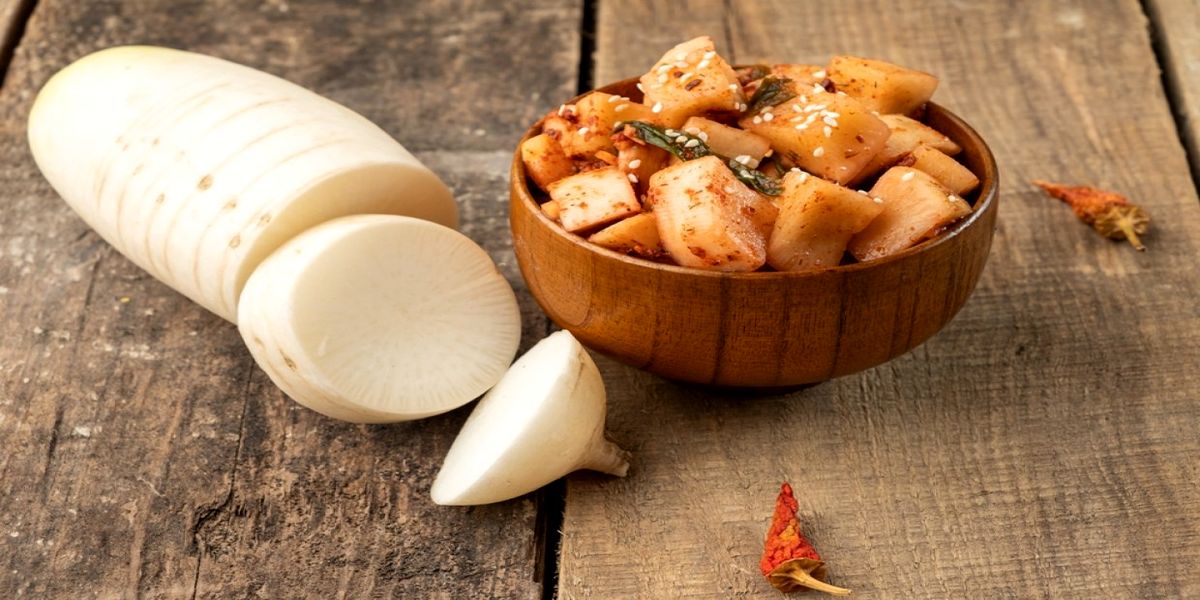
In Japanese cuisine, daikon is one of the most important ingredients, it is used in soups, salads and side dishes, boiled, marinated, fresh, and stewed. In China, this vegetable is cooked with shiitake mushrooms, while the Burmese and Koreans prefer salted daikon. In Eastern Europe, this root crop is most often referred to as "white radish" or "white radish", salads with sour cream, butter or cream are prepared from it.
Daikon leaves are large, in shape - like other types of radish. They are edible, but they are eaten infrequently, mostly at a very young age.
Like most cruciferous plants, left in the ground or planted radish blooms in the second year, after which seeds are formed. Daikon is frost-resistant: an autumn drop in temperature down to -4 ° C is not dangerous for him.
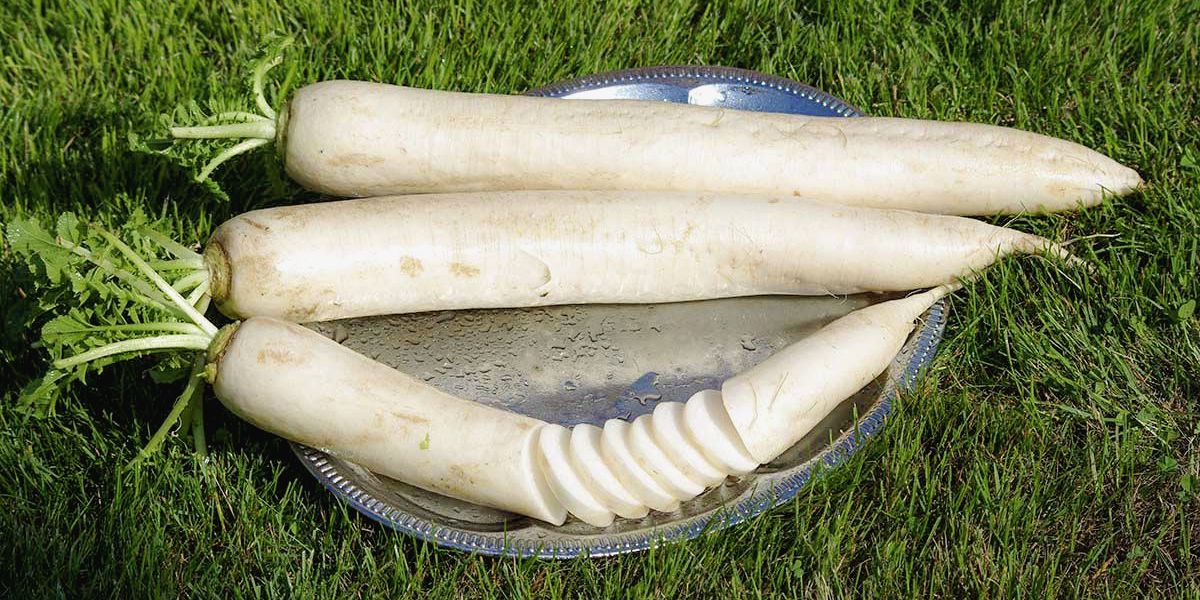
Daikon is a dietary product: root crops have a low calorie content, contain a large amount of ascorbic acid and other healthy substances.
The growing season, depending on the daikon variety, ranges from one and a half months to six months, in most cases 2-3 months.
The most popular daikon varieties are:
- Sasha;
- The Dragon;
- Minowashi;
- Cudgel;
- Flamingo F1;
- Mammoth tusk.
Conditions for growing daikon
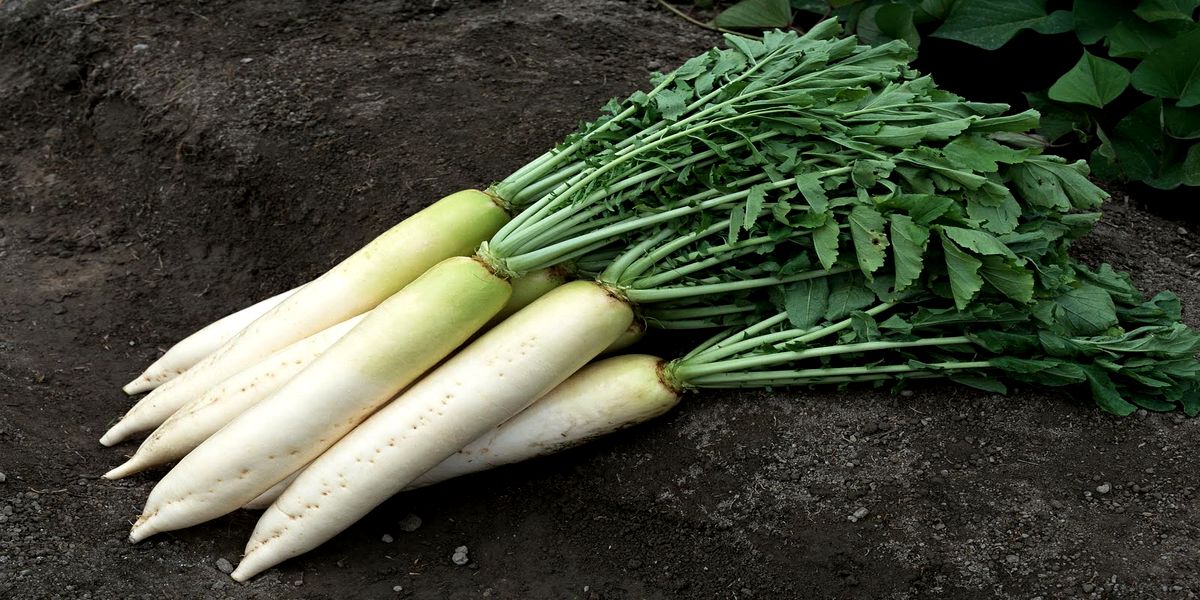
You can grow daikon on the site in any corner of our country.
Daikon is exceptionally unpretentious:
- The best soils are loams and sandy loams with an environment close to neutral, but it grows on both clay and sand.
- Optimum temperatures are moderate, around 20 ° C, but both 10 ° C and 30 ° C are suitable, although in the latter case the roots turn out to be dryish, and the risk of flowering increases.
It is because of the transition to shooting and flowering that some gardeners do not succeed in daikon. It should not grow at daylight hours for more than 12 hours: in this case, a normal root crop does not form, and the plant blooms.
Planting dates for daikon seedlings and seeds
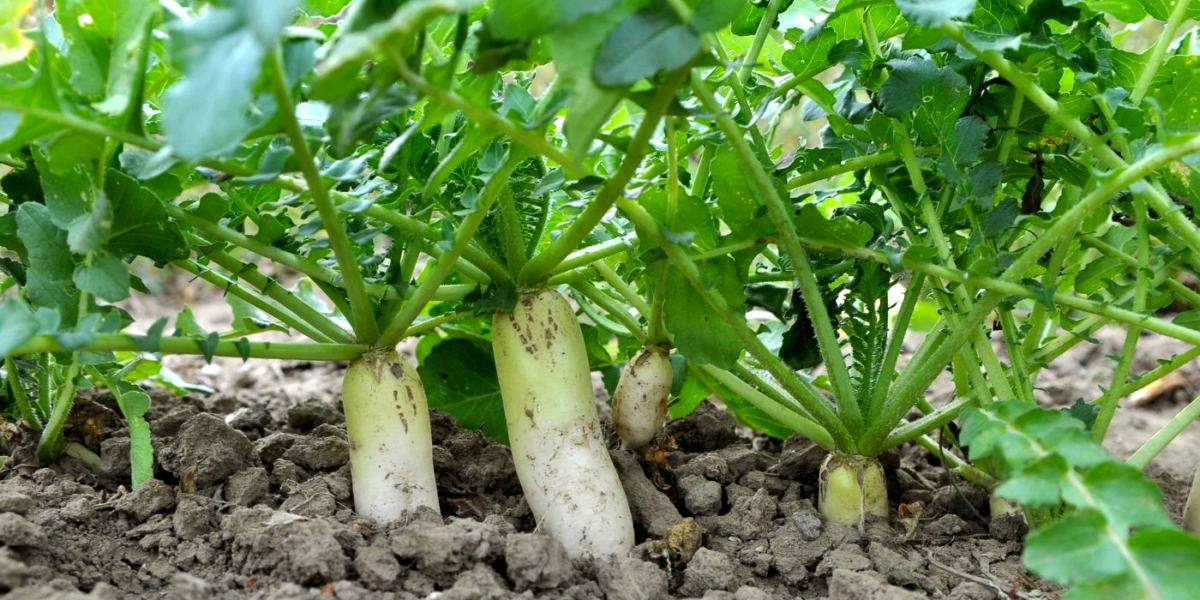
The main condition for obtaining a normal daikon crop is the correct sowing time.
Sometimes Japanese radish is also grown through the seedling stage: sowing in boxes is carried out in mid-April.
The goal is to get early production in conditions before the maximum length of the day has yet arrived.
In this case, the earliest ripe varieties are taken, the seedlings are transferred to open ground in May, and the crop is harvested in June. However, this is a rather risky event, plants may bloom.
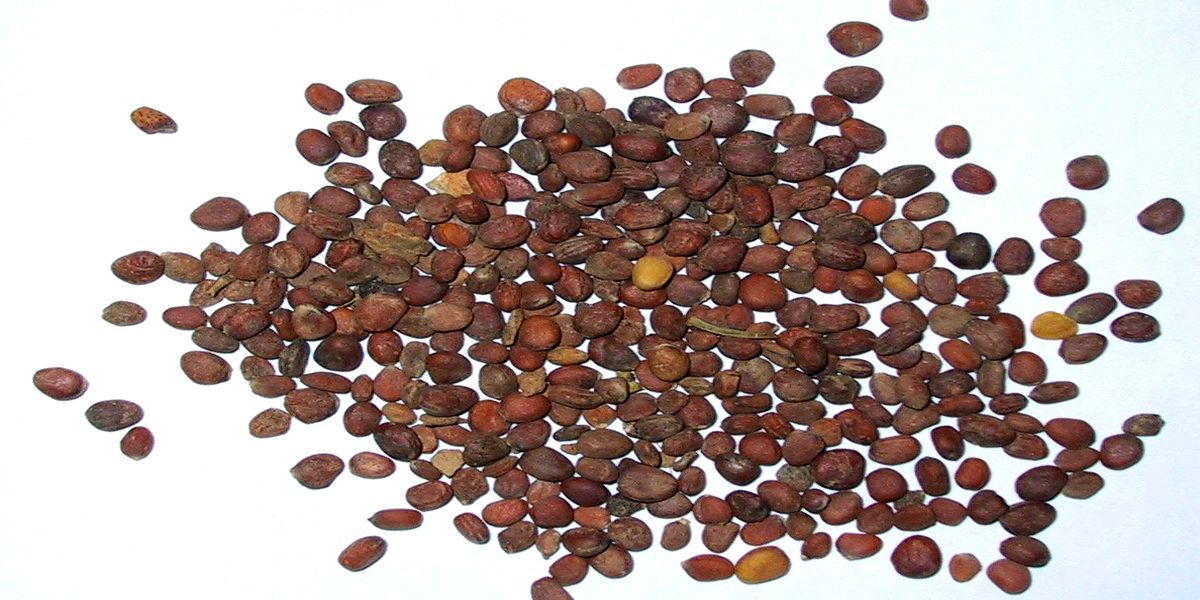
In the vast majority of cases, gardeners sow daikon seeds directly into the garden.
It is pointless to sow daikon seeds before July. It is necessary to do this when the duration of daylight hours has decreased by at least an hour. Therefore, the optimal sowing time everywhere is mid-July.
True, in the north, there may not be enough heat, so you need to choose the right varieties there. In the southern regions, after July 15-20, you can safely sow any varieties and hybrids you like. In the central regions, you should not grow the most late-ripening.
In cold climates, daikon varieties are most reliable:
- Misato Green;
- Masha;
- Sasha.
These are the earliest options: when sown after July 15-20, the harvest will already be ready in September.
Preparation of daikon seeds is not needed, except that you can warm them for half an hour in hot water for disinfection.
Sowing daikon seeds in May - June is a way to get seeds for the future.
Soil preparation for sowing daikon
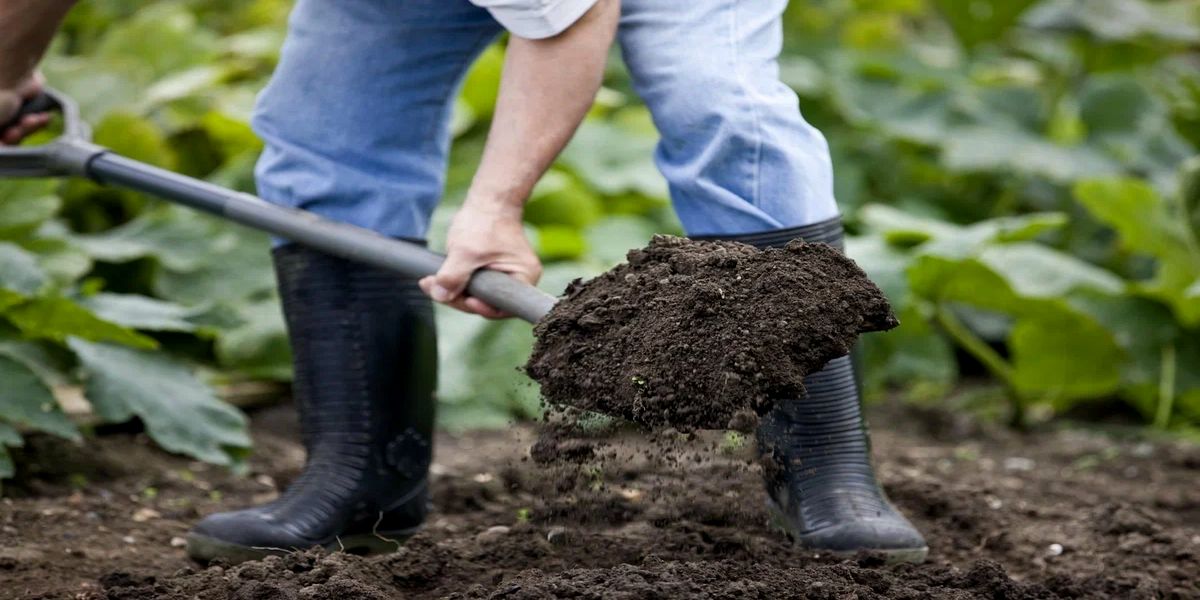
Since the sowing of the daikon is carried out late, the gardener has plenty of time to prepare the garden.
Of course, few people will keep a free place in the first half of summer, so most often the daikon is grown after harvesting salads and winter garlic.
In addition to them, good predecessors are:
- carrot;
- cucumbers;
- nightshade (tomatoes, peppers, potatoes).
True, by the middle of summer, only early potatoes can be removed, so garlic is the ideal predecessor for daikon, which also reliably disinfects the earth.
Daikon is by no means planted after any cabbage, turnip, radish. And the best neighbor in the garden is onions.
- In order for the root crops to turn out, as expected, long, deep digging is required.
- The addition of fertilizers when digging the soil is required. Everything will do, except for fresh manure: better - completely rotted compost and some mineral fertilizers.
- Organics put at least a bucket per 1 square meter, azofoski - 30-40 g. And of course - wood ash, you can have a whole liter jar, or even more. This is both a source of potassium and a repeller of cruciferous fleas - the main enemy of any radish.
- Immediately before sowing, the bed is leveled with a heavy rake.
Daikon sowing: step by step instructions
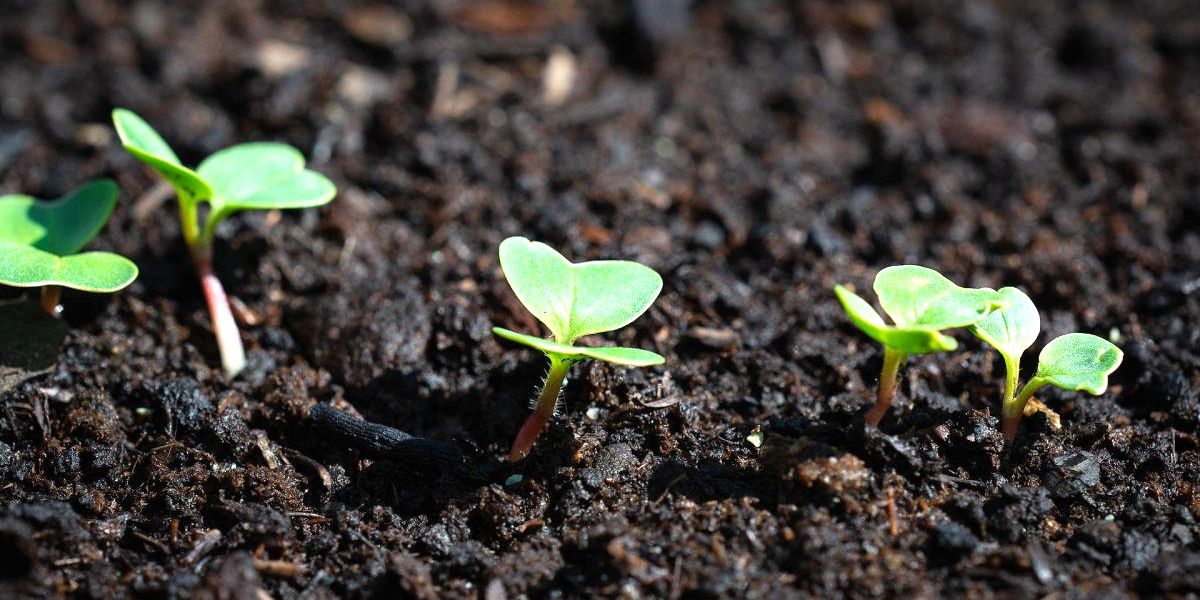
Growing daikon in the country from seeds is easy, and sowing it is not a problem.
- Daikon is a large crop, therefore, in the rows, the distance between plants is from 30 to 45 cm, a little more between the rows.
- Seeds are sown with a margin: thick seedlings are subsequently thinned out, including for eating greens in salads.
- It is inconvenient to mark the holes according to the chosen scheme, therefore, grooves are made up to 2 cm deep with distances between them of 50-60 cm.
- Spill them from a watering can without a diffuser until the water stops being absorbed.
- Seeds are laid out 8-10 cm apart, if this is not a too expensive hybrid. However, in the latter case, a couple of weeks after germination, young plants in cloudy weather can be carefully planted.
- Sprinkling the seeds with earth, slightly compact it.
- To preserve moisture, it is worth throwing grass on the surface of the bed.
- Seedlings can be expected in 4-6 days.
Daikon care in the open field
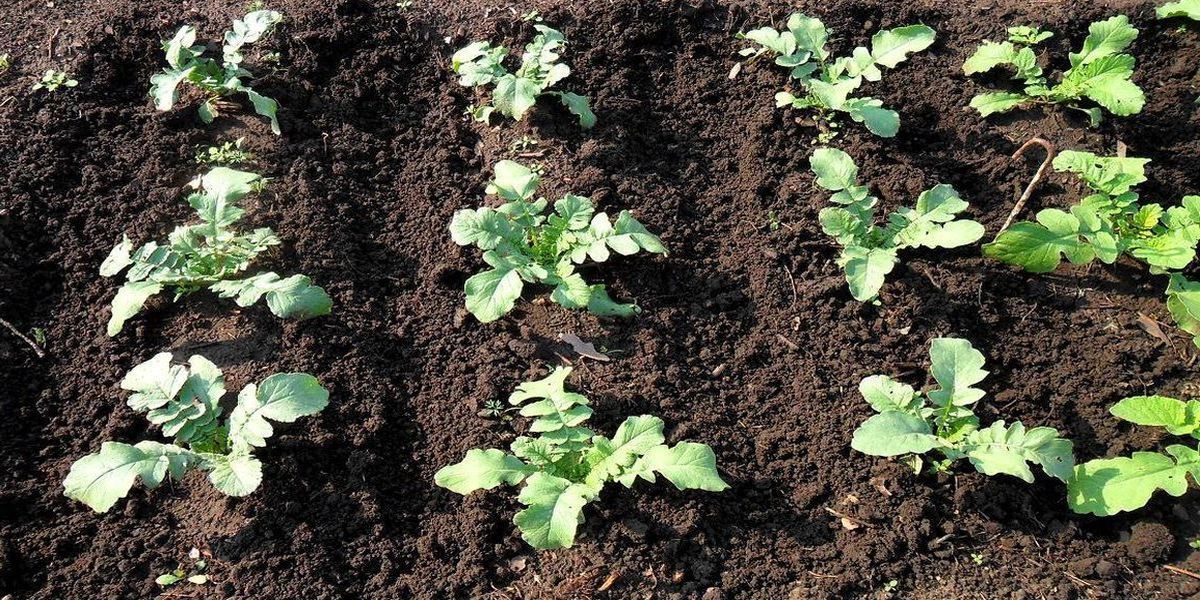
Daikon care is not difficult:
- Daikon care is minimal, the main thing is systematic abundant watering, it is carried out until water is absorbed.
- Even short-term drying of the soil threatens to produce hard root crops.
- In the heat, the bed has to be watered daily, and this is the case when waterlogging is not fatal: in order for the daikon roots to rot, a completely outright flood is needed.
- At first, you need to pull out weeds and loosen the soil.
- In almost all varieties and hybrids, root crops grow in such a way that they are almost half visible from the ground, therefore, while this is real, they are lightly spudded: the procedure has a positive effect on the taste of the pulp. When the leaves become very large, hilling will have to be stopped.
- Few feed the radish, this is required only when planting in insufficiently fertile soil. After the formation of 4-5 true leaves, the bed is generously dusted with ash, then watered thoroughly. After another 3-4 days, a pinch of azofoska is poured near each plant before watering.
Daikon harvesting and storage
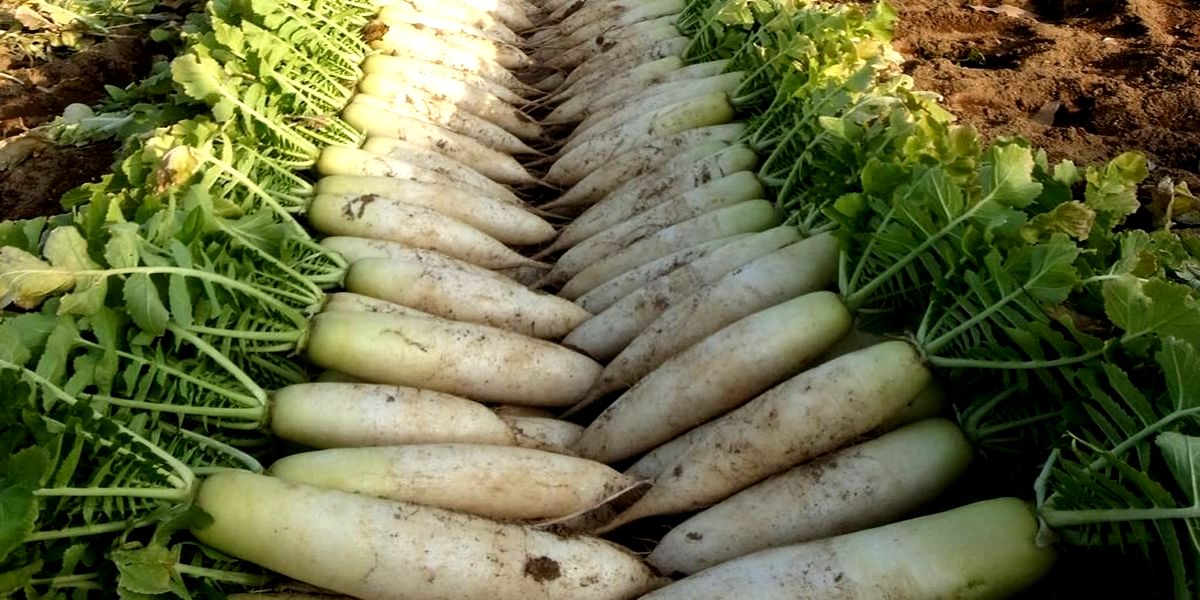
Daikon reaches technical maturity 40-70 days after planting in the ground. Ripening time depends on the variety.
Features of cleaning and storage:
- Stop watering a week before harvest.
- Don't delay cleaning. As soon as the root crops ripen, they must be removed as soon as possible - being in the ground, they lose their useful and taste qualities.
- Cleaning is carried out only in sunny weather.
- If the soils are loose, root crops are pulled out by the tops, from clay soils they are dug up.
- Before laying the root crops for storage, they are dried in the sun for one to two days.
- Dried daikon is stored in boxes or bags, which are placed in a dry and cool room. To better store root crops, they are sprinkled with sand or moss.
- The optimum storage temperature is 0...+5°C.
- The recommended humidity is 50-70%.
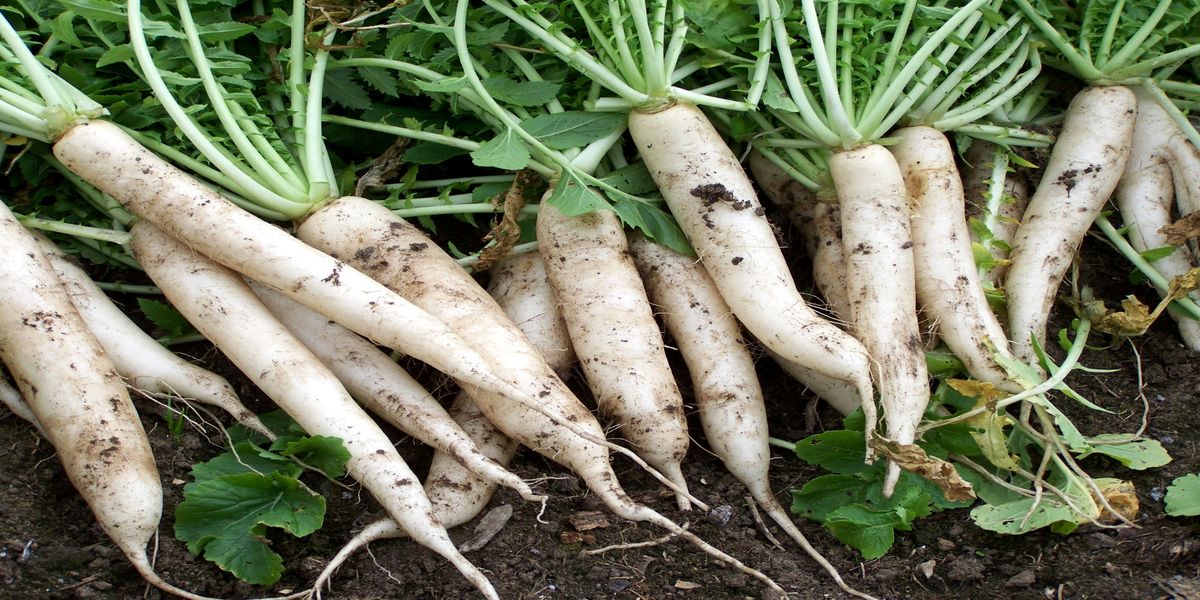
With proper organization of storage, daikon roots retain their taste and presentation for 1-2 months.
After harvesting the daikon, the site is dug up, removing all plant debris. Although this vegetable has a short growing season, it manages to draw a lot of useful substances from the soil.
After the Japanese radish, you can not plant cruciferous crops, you can - tomatoes, potatoes, pumpkins, beans.
Daikon diseases and pests
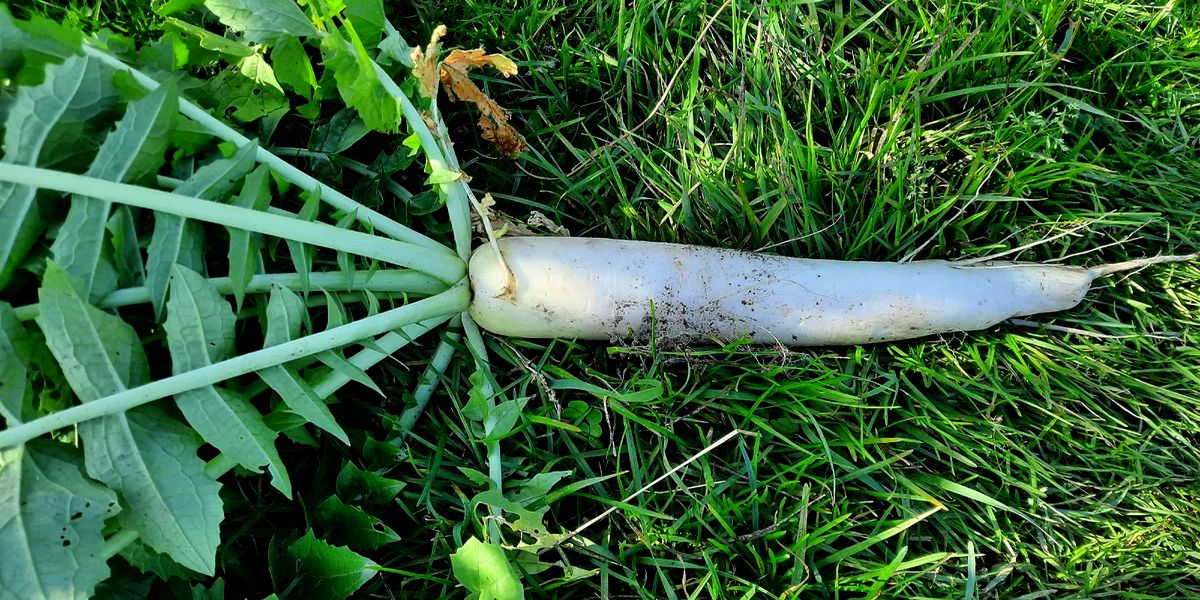
Daikon rarely gets sick: if the seeds are not infected, then problems occur only with very wrong care.
It can be:
- mucous bacteriosis;
- vascular bacteriosis;
- keel;
- mosaic.
Due to the short growing season, it is not possible to treat radish, so it is better to prevent diseases by observing the rules of agricultural technology.
Daikon has many pests, the main ones are:
- cruciferous flea;
- garden owl;
- aphid;
- cabbage fly;
- slugs.
Many are well driven away by wood ash. It is better to fight aphids with folk remedies (infusions of tobacco dust, hot pepper).

Slugs have to be collected by hand or set up traps (beer cans). Half of the different butterflies are driven away by the marigolds planted in the garden bed.
Tips and nuances of growing daikon
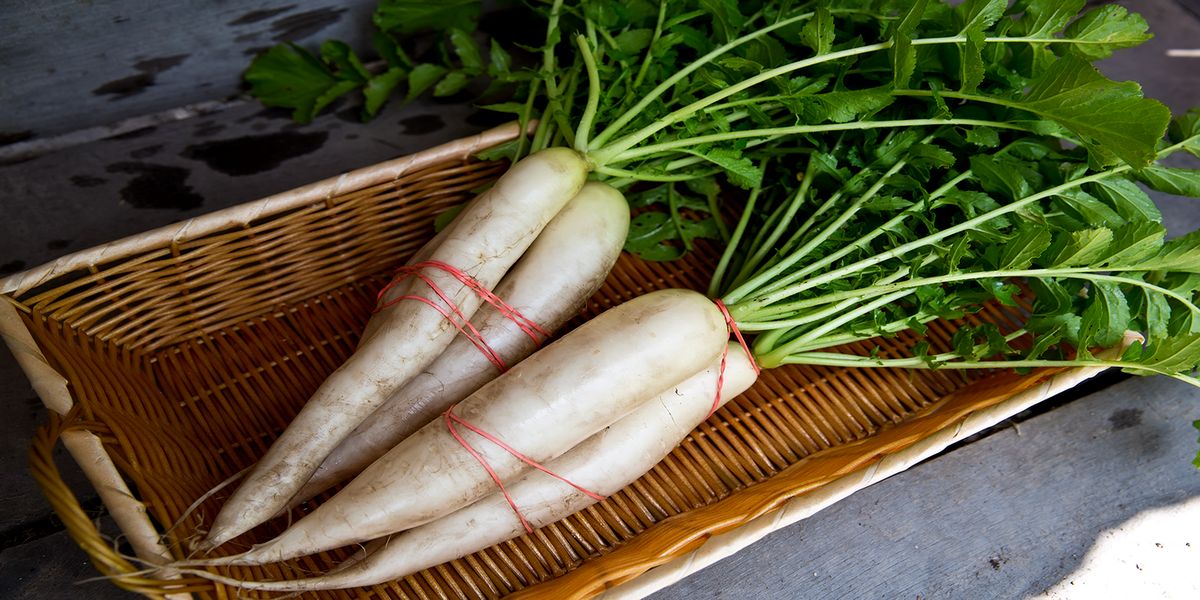
Daikon is an easy-to-grow crop, but there are some nuances:
- it is difficult to understand where you can win in terms of sowing (with late June, the yield is higher, but the risk of flowering is much greater than with late July);
- when fresh manure is applied, ugly root crops are obtained;
- if the heat is long, the harvest will be rough in taste;
- daikon can also grow bitter: if periods of sufficient watering alternate with drying out of the soil.
If the daikon still bloomed, you can try to break off the arrow: there is a possibility that the root crop will grow, albeit medium-sized, but edible.
Daikon is a very healthy vegetable: it is especially important for the elderly and those who are on a diet. It is interesting in that the root crops grow truly huge, and the labor costs for this are small. Even an inexperienced gardener can grow a daikon.



